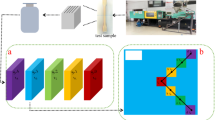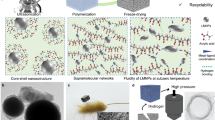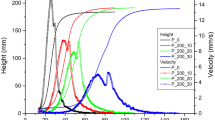Abstract
A novel polypropylene glycol (designated PPG) which contains an extremely smaller amount of by-products (monols) was developed to improve the riding comfort of an automotive seating foams. The current trend in the automotive seating industry is moving to low resilience molded foam due to the structure change from “full foam” to “foam and high tension spring combination,” new automotive seating foams were desired to have low resilience with keeping the low transmissibility at 6 Hz. Riding comfort mainly consists of three factors such as static property, dynamic property and durability. Each issue was solved by means of increasing the polymer molecular weight and the crosslinking density in the polymer matrix. Furthermore, it was also cleared that the transmissibility at resonance frequency of the foam can lower by means of the adjustment of closed cell ratio in the foam. In this paper, we describe the foam properties (static property, dynamic property, durability) of TDI/MDI based molded foams and make clear the mechanism of the Riding comfort of automotive seating foams.
Similar content being viewed by others
Log in or create a free account to read this content
Gain free access to this article, as well as selected content from this journal and more on nature.com
or
References
F. M. Casati, R. M. Herrington, R. Broos, and Y. Miyazaki, J. Cell. Plastic., 34, 430 (1998).
T. Sato, F. Nakamura, and O. Kondo, presented at Proceedings of the Fourth International Pacific Conference on Automotive Engineering, 299, Melbourne, 1987.
K. W. Suh, C. P. Park, M. J. Maurer, M. H. Tusim, R. D. Genova, R. Broos, and D. P. Sophiea, Adv. Mater., 12, 23 (2000).
M. Ionescu, “Chemistry and Technology of Polyols for Polyurethanes,” Rapra Technology Limited., United Kingdam, 2005, pp 167–183.
M. Ionescu, “Chemistry and Technology of Polyols for Polyurethanes,” Rapra Technology Limited., United Kingdam, 2005, pp 167–183.
Japanese Automobile Standard Organization, B 408-89, (1989).
S. D. Seneker, N. Barksby, and B. D. Lawrey, presented at Proceedings of the Polyurethanes Expo’96, Las Vegas, 1996.
N. C. Hilyard, “Mechanics of Cellular Plastics,” Applied Science Publishers Ltd., Chapter 3, England, 1982, p. 105.
N. C. Hilyard, “Mechanics of Cellular Plastics,” Applied Science Publishers Ltd., Chapter 3, England, 1982, p. 103.
N. C. Hilyard, “Mechanics of Cellular Plastics,” Applied Science Publishers Ltd., Chapter 3, England, 1982, p. 102.
T. E. Fairly and M. J. Griffin, J. Biomechanics, 22, 81 (1998).
L. Wei and M. J. Griffin, J. Sound. Vib., 212, 855 (1998).
L. Wei and M. J. Griffin, J. Sound. Vib., 214, 121 (1998).
J. H. Varterasian, SAE Paper, NO. 770249, 1977, p. 1–10.
A. N. Gent and K. C. Rusch, Rubber Chem. Technol., 39, 389 (1966).
R. E. Blake, “Shock and Vibration Handbook,” 2nd ed., C. M. Harris and C. E. Crede, Ed., McGraw-Hill, 1961, Chap. 41.
N. C. Hilyard, J. Sound. Vib., 32, 71 (1974).
K. Yasunaga, R. Neff, and C. W. Macosko, J. Cell. Plastic., 32, 427 (1996).
Y. Toyota, N. Hasegawa, H. Wada, A. Horie, S. Hatano, T. Sasaki, and S. Oki, presented at Proceedings of the Polyurethanes World Congress, Amsterdam, 1997.
Author information
Authors and Affiliations
Corresponding author
Rights and permissions
About this article
Cite this article
Wada, H., Toyota, Y., Horie, A. et al. Automotive Seating Foams with Excellent Riding Comfort Prepared by a Novel Polypropylene Glycol. Polym J 40, 842–845 (2008). https://doi.org/10.1295/polymj.PJ2008098
Received:
Accepted:
Published:
Issue date:
DOI: https://doi.org/10.1295/polymj.PJ2008098
Keywords
This article is cited by
-
Study on Seating Comfort of Polyurethane Multilayer Seat Cushions
International Journal of Automotive Technology (2020)



